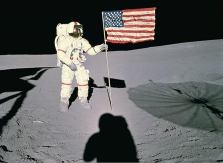
Home

WarmUp

What is Physics Good
For?

Puzzle

Lab Prep

Course Information

Communications

Homework Server

Resources
|
 |
 |
I xeroxed a mirror. Now I have an extra xerox machine.
 -- Stephen Wright -- Stephen Wright
|
Course Announcements - 12/9/11
- Don't forget the final exam, next Friday, 12/16/11, at 10:30 AM in LD010!
- Here is a sample final exam and formula sheet.
- Welcome to the Physics 25100 Web Site! Check this spot for course announcements, etc.
- The Physics Department offers free tutoring! Check the physics
department web site for
hours and locations
- All assignments are due at 10 AM on the date due, except lab preps, which
are due at 11 AM on Wednesdays for ALL lab sections. Homeworks
are due Tuesdays and Thursdays, WarmUps are due Mondays and Wednesdays.
Puzzles are due Fridays, but there will be no puzzle this week.
- Please read the course information sheet, syllabus, assignment sheet, and objectives, on the information page.
- Here are a few hints for doing well in Physics 25100.
- A few more hints about doing well in college
- Interested in doing a honors option for this class? There are many possibilities!
|
Other News
- Science news: If the Earth were a perfect sphere (which it isn't) of uniform density (which it isn't), its gavitational field would be uniform as well (care to guess?) European scientists have recently published the most accurate map ever of the Earth's gravitational field.
- Science history: On November 13th, 1971, the Mariner -9 probe
entered orbit around Mars, becoming the first man made object to
orbit another planet.
- Technology history: November 15th, 1928. The Wabash Railway
began testing the first train car designed to detect defects in
the track. The system operated by running a large electric
current through the track, and using search coils to detect
perturbations in the magnetic field produced.
|

Alan Shepard and the flag during the Apollo 14
mission, 1971, courtesy of NASA. |
 |
Bifocals were invented by Benjamin Franklin. He simply cut two pairs of lenses in half, and glued the halves together. |
This site is made possible by funding from the National Science Foundation (DUE-9981111).
©2011 A. Gavrin, all rights reserved.
|
|




